Australia AiG Performance of Construction Index dropped to 40.0 in November, down from 43.9. The result indicates sharper decline in the construction industry on aggregate. It’s also the 15th straight month of contractionary reading. As AiG said, “this on-going weakness in business conditions was associated with a steeper fall in employment and a continued reduction in deliveries from suppliers.”
BoJ Kuroda: Markets are making very unstable moves
BoJ Governor Haruhiko Kuroda told the parliament today, “there’s uncertainty on when the coronavirus will be contained, and markets are making very unstable moves”. BoJ will “continue to keep an eye out on how the spread of the virus could affect Japan’s economy and prices, particularly via domestic and overseas market developments, and act appropriately as needed without hesitation.”
Japan Finance Minister Taro Aso reiterated that the government will only tap the remainder of this fiscal’s budget to finance the coronavirus response package. “We need to ascertain the current situation first”, he said, “at this stage there’s no saying” whether the government needs an extra budget. He also noted, “financing will focus on small and tiny businesses who face the need of financing over the next two to three weeks.”
Euro jumps in delayed reaction to ECB talks
Euro trades broadly higher today as buying picks up in early European session. It could be seen as late reaction to reports regarding ECB. Markets are fully pricing in a 10bps hike to the deposit rate only in December 2019. Odds of a September 2019 hike is at around 80%. And it’s reported that some ECB policy makers are unhappy with it.
A sticky point is that ECB is clear with its communication that rates will remain at present level at least through the end of summer of 2019. That left markets with some rooms for interpretation on whether it means the end of “September.
But, we’d like to highlight one thing. Fed is clear with its projection of two more hikes this year. And fed funds futures are pricing in only around 50% chance for that. So, in our view, there’s nothing special for ECB officials to be unhappy about.
Eurozone PMI composite rose to 30.5, still point to -10% Q2 GDP contraction
Eurozone PMI Manufacturing rose to 35.4, up from 18.1, below expectation of 38.0. PMI Services rose to 28.7, up from 12.0, above expectation of 23.9. PMI Composite rose to 30.5, up from 13.6.
Chris Williamson, Chief Business Economist at IHS Markit said:
“The eurozone saw a further collapse of business activity in May but the survey data at least brought reassuring signs that the downturn likely bottomed out in April. “Second quarter GDP is still likely to fall at an unprecedented rate, down by around 10% compared to the first quarter, but the rise in the PMI adds to expectations that the downturn should continue to moderate as lockdown restrictions are further lifted heading into the summer.
“An additional concern is that demand is likely to remain extremely weak for a prolonged period, putting further pressure on companies to make more aggressive job cuts as government job retention schemes expire. We therefore expect GDP to slump by almost 9% in 2020 and for a full recovery to take several years.”
German Altmaier open to drop subsides on Airbus, if US does so with Boeing
German Economy Minister Peter Altmaier is set to meet US Trade Representative Robert Lighthizer to discussion resolution to the Boeing-Airbus dispute. He would be open to eliminating all government subsidies to Airbus, on condition that US would do the same to Boeing.
He said, “I could perfectly go along with … we will no longer provide any subsidies on both sides. Then it is just competition and nothing else.” He added, “it is in the interest of both sides to avoid these tit-for-tit tariffs”, referring to the tariffs between US and EU on the issue.
Altmaier also had a “productive and constructive” meeting with US Treasury Secretary Steven Mnuchin. He noted that “We are in the middle of intensive discussions. For me, the Americans remain partners and friends despite our disagreements.”
ECB Lagarde: Withdrawing accommodation may not be enough to bring inflation back to target
ECB President Christine Lagarde said in a speech that after increasing interest rates by 200bps, “we expect to raise rates further”. He added that, “withdrawing accommodation may not be enough to bring inflation back to our target”. But how much further to go, and how fast, will be determined by a few factors.
The first and most important factor is “inflation outlook”. The second factor is “corresponding policy stance and its transmission lags into demand and inflation”.With the lag in transmission and prevailing uncertainty, “the rate path ahead will look different depending on the contingencies we face.”
ECB Villeroy: Interest rate would probably peak in summer
ECB Governing Council member Francois Villeroy de Galhau said that interest rate would probably peak in the summer, which technically ends in September. Meanwhile, a rate cut this year is out of question.
But he also emphasized there is no “automatic moves” at each meeting. the central criteria is a “shift in the inflation path”, especially underlying inflation.
He also noted that interest rate will be kept at the peak level as long as necessary to bring inflation back to 2% target.
Fed’s Bostic: Current policy rate sufficient to curb inflation
Atlanta Fed President Raphael Bostic made a clear stance today, expressing confidence in the prevailing policy rate’s ability to bring inflation down to the desired 2% mark. In his words, “I think that our policy rate is at a sufficiently restrictive position to get inflation down to 2%.” Contrary to some speculations about further hikes, he stated, “I actually don’t think we need to increase rates anymore.”
Bostic’s comments come at a crucial juncture when the market is closely monitoring the bond market dynamics, especially recent sharp rise in Treasury yields. Responding to queries about the possible impact of rising Treasury yields on the Fed’s policy approach, Bostic highlighted that the present rates are “clearly” on the restrictive side, hinting at a visible slowdown in economic activities. He also hinted at more repercussions from the Fed’s past hikes that might manifest in the near future.
In addition to domestic economic indicators, Bostic also touched upon the geopolitical developments, particularly the recent violent episodes in Israel. Recognizing the potential of such geopolitical events to infuse further uncertainty in the global economic landscape, Bostic underscored the need for the Federal Reserve to remain agile. He emphasized the importance of being nimble and ready to adapt in light of rapidly evolving global scenarios.
Australia NAB business confidence rose to 6, conditions rose to 18
Australia NAB Business Confidence rose further from 0 to 6 in January. Business Conditions also improved from 13 to 18. Looking at some details, trading conditions rose from 20 to 28. Profitability conditions rose from 13 to 17. Employment conditions rose from 9 to 10.
NAB Chief Economist Alan Oster: “Business conditions picked back up in January after three months of softening in late 2022. There were strong increases in conditions for ‘upstream’ sectors such as wholesale, construction and manufacturing, and importantly, conditions in the more consumer-facing industries remained very strong.”
“Confidence dipped into negative territory late in 2022 but is now back around the average after rebounding over the past two months. The improvement in confidence suggest firms have a more optimistic outlook as concerns about global growth prospects ease, while strong conditions are also providing evidence that the economy is more resilient than previously expected.”
China export plunged -9.9% yoy in Dec, imports dropped -7.5% yoy
China exports plunged -9.9% yoy in December in USD terms, worst drop since February 2020, but slightly better than expectation of -10.0% yoy. Imports fell -7.5% yoy, better than expectation of -9.8% yoy. Trade surplus widened from USD 69.8B to USD 78.0B, slightly above expectation of USD 77.9B.
In CNY term, exports declined -0.5% yoy while imports rose 2.2% yoy. Trade surplus widened from CNY 494B to CNY 550B, above expectation of USD 533B.
For 2022 as a whole, in US term, exports rose 7.2%, much worse than 2021’s 29.6%. Imports rose 1.1%, down sharply from 2021’xs 30.0%.
USD/CNH extended the decline from 7.3745 this week on Dollar’s broad based selloff. Nevertheless, it’s sitting close to an important support zone around 6.7159 (61.8% retracement of 6.3057 to 7.3745 at 6.7140). Considering oversold condition in daily RSI, a rebound should be due. Break of 6.7989 resistance will indicate short term bottoming, and bring rebound. But considering that the falling 55 day is now at around 6.9768, there is little prospect for the rebound to break through 7 handle for now.
HK HSI dives as Yellen visit China amid rising US-China tensions
Hong Kong HSI is taking a hit today as it gapped down at open and further sell-offs materialized during the initial part of Asian trading session. This market movement mirrors intensifying investor concerns as US Treasury Secretary Janet Yellen starts a four-day visit to China. While the intention behind Yellen’s visit is to de-escalate potential conflicts between these two economic behemoths, atmosphere has notably soured this week.
Earlier in the week, China struck a discordant note by announcing fresh restrictions on export of several critical minerals used in manufacture of semiconductors and solar panels. This move appears to be a tit-for-tat response to the tech export limitations that the US has imposed on China, limiting the sale of advanced computer chips. Further adding to the apprehension, US government is reported to be contemplating additional measures to restrict China’s access to US-based cloud computing services.
On a separate front, China delivered another blow to international diplomatic relations when it abruptly canceled a visit by European Union foreign policy chief Josep Borrell, scheduled for next week, according to an EU spokesperson. The Chinese authorities have not yet disclosed the reasons behind this unexpected cancellation.
From a technical perspective, today’s market turbulence in Hong Kong, marked by a gap down followed by a sharp drop, appears to validate rejection by 55 D EMA (now at 19428.57). Fall from 20155.92 is likely to be another chapter in the overall descent from 22700.85. As decline progresses, a drop below 18044.85 low is expected. However, substantial support is still expected from 61.8% retracement of 14597.31 to 22700.85 at 17692.86, and this could potentially spur a reversal. Let’s see how it goes.
US initial jobless dropped -3k to 223k
US initial jobless claims dropped -3k to 223k in the week ending March 12, slightly below expectation of 225k. The four-week moving average of initial claims dropped -3k to 226.25k. Continuing claims dropped 50k to 1.755M in the week ending February 23. Four-week moving average of continuing claims rose 4.75k to 1.767M.
Also release, US non-farm productivity was finalized at 1.9% in Q4, unit labor cost at 2.0%. Canada building permits dropped -5.5% mom in January.
UK wages growth slows more than expected in Jan
In February, UK payrolled employment rose 20k or 0.1% mom. Median monthly pay increased by 5.5% yoy. Annual growth in median pay was highest in the other service activities sector, with an increase of 7.4% yoy, and lowest in the finance and insurance sector, with a decrease of -0.3% yoy.
In the three months to January, unemployment rate ticked up to 3.9%, above expectation of 3.8%. Average earnings including bonus rose 5.6% yoy, slowed from 5.8% yoy, below expectation of 5.7% yoy. Average earnings excluding bonus rose 6.1% yoy, down from 6.2% yoy, below expectation of 6.2% yoy.
Mid-US update: Risk aversion dominates, Yen surges but bulls seem refusing to commit further
Yen remains the strongest one for today at the time of writing as global market rout spreads to the US. Swiss Franc trails as the second strongest.
On the other hand, Australian Dollar is the weakest one while Dollar is not that far away.
DOW is currently down -1.45 at 24949 after dropping to as low as 24768.79 earlier today. The break of 24899.77 support indicates resumption of the whole decline from 26951.81 and suggests more downside ahead. S&P 500 is down -1.98% while NASDAQ is even worse, down -2.15%.
Treasury yields are also in red with 10 year yield down -0.49 at 3.324.
However, we’d like to point out that despite the strong rally, Yen bulls seem refusing to commit yet. USD/JPY is held by 111.94 minor support for now. EUR/JPY breached 128.32 low but quickly recovered. More is needed to confirm the strength of Yen.
In Europe:
- FTSE closed down -1.24% at 6955.21, broke 7000 psychological level
- DAX closed down -2.17% at 11274.28
- CAC closed down -1.69% at 4967.689, below 5000 psychological level.
- Italian 10 year yield jumped 0.10003 to 3.58 after EU rejection of Italian budget
- German 10 year yield is down -0.0407 at 0.411. German-Italian spread is back above 310.
ECB’s Nagel: Too early to think about a pause
ECB Governing Council member Joachim Nagel, in remarks made yesterday, reinforced his stance on the ongoing monetary tightening efforts of the central bank. Addressing speculations around a potential pause, he firmly stated, “It’s for me much too early to think about a pause,” emphasizing the significant gap between the current inflation rate and ECB’s target.
Nagel pointed out the glaring disparity between the present inflation situation and ECB’s benchmark, saying, “We shouldn’t forget inflation is still around 5%. So this is much too high. Our target is 2%. So there’s some way to go.”
Despite the overarching concern regarding a slowdown in economic activity in Eurozone, Nagel highlighted the persistence of core inflation and characterized the labor market as being “really pretty good.”
Dismissing prevalent narratives surrounding Germany’s economic health, he countered, “I hear a lot of talk about Germany, the sick man of Europe. This is definitely not the case.” Concluding on an optimistic note, Nagel added, “I’m still pretty optimistic that we will have a soft landing.”
SNB keeps negative rate at -0.75%, remains willing on FX intervention
SNB left sight deposit rate unchanged at -0.75% as widely expected. “In view of the fact that the Swiss franc is still highly valued, the SNB remains willing to intervene more strongly in the foreign exchange market, while taking the overall exchange rate situation into consideration.”.
On inflation outlook, which is subject to “unusually high uncertainty”, SNB expects inflation to stay negative this year at -0.6%. Inflation is then likely to “edge back to positive” in 2021 at 0.1%, and “increase slightly further” in 2022 at 0.2%.
SNB also noted that GDP is set to shrink by around -5% this year. But domestic economic activity has “picked up significantly since May”. That should be reflected in a “strong rise in GDP” in Q3. The positive development is “likely to continue in 2021. However, recovery will only be “partial for the time being”.
Canada housing starts rose 7.4 to CAD 8.7B
Canada building permits rose 7.4% mom in December to CAD 8.7B, above expectation of 3.5% mom. Increases were reported in five provinces, led by Ontario (10.5% to CAD 3.4B) and Quebec (15.8% to CAD 2.2B)
The standalone monthly SAAR of housing starts for all areas in Canada was 213,224 units in January, an increase of 8.8% from 195,892 units in December.
Yen recovers after limited loss as markets digest delay of US tariffs on China
Asian markets open generally higher, following the strong rebound in US stocks overnight. Though, strength is relatively limited as none of the major indices are gaining over 1% at the time of writing. Yen is also paring some of yesterday’s losses and recover broadly. It would take more time to see the real implications of US announcement to delay some tariffs on Chinese imports. The move was generally well received by industry groups. But some analysts criticized that it’s merely an incremental positive sign. It’s too late and insufficient.
In short, the tariffs on a 21-page list of products would be delayed until December, subject to further negotiations between US and China. Both sides are continuing telephone conversations in preparation for a meeting in Washington in September. According to Wells Fargo‘s estimation, the tariff delay involves around 60%, or roughly USD 155B worth of goods. The products range from cellphones, laptops and other consumer goods including baby monitors and strollers, microwaves, instant print cameras, doorbells, high chairs, musical instruments, ketchup dispensers, baby diapers, fireworks, sleeping bags, nativity scenes, fishing reels, paint rollers and food products.
In response to the news, Retail Industry Leaders Association said “removing some products from the list and delaying additional 10% tariffs on other products, such as toys, consumer electronics, apparel and footwear, until Dec. 15 is welcome news as it will mitigate some pain for consumers through the holiday season.”
The Consumer Technology Association also welcomed the the delay on some items, but added: “Next month, we’ll begin to pay more for some of our favorite tech devices – including TVs, smart speakers and desktop computers. The administration should permanently remove these harmful tariffs and find another way to hold China accountable for its unfair trading practices.”




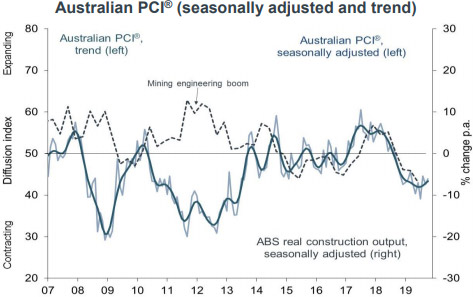
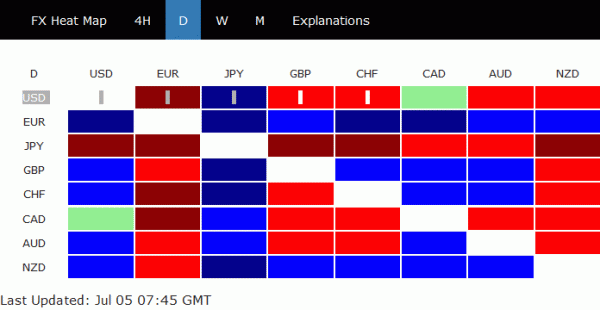
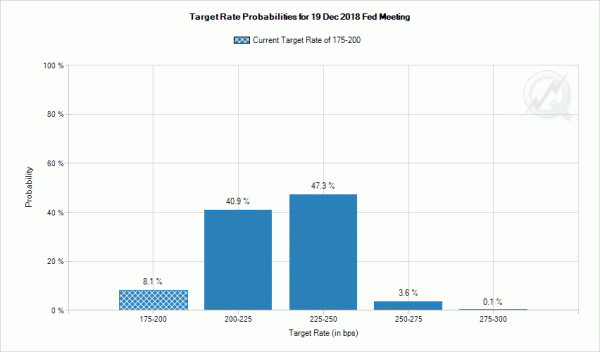
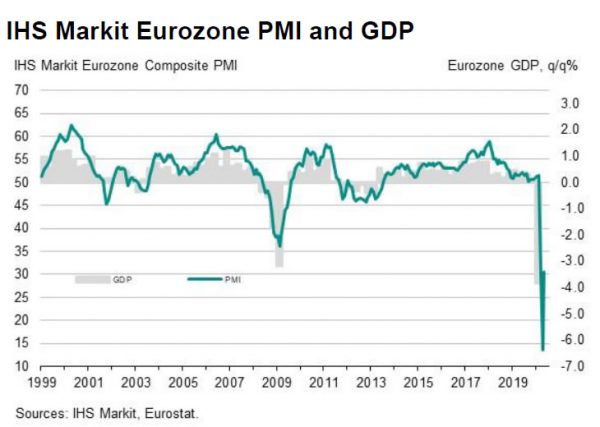
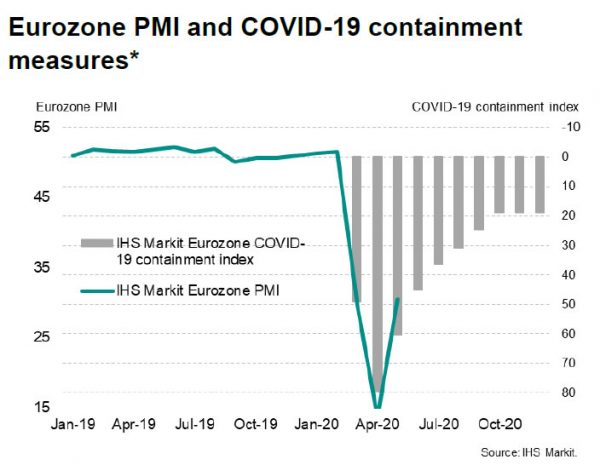

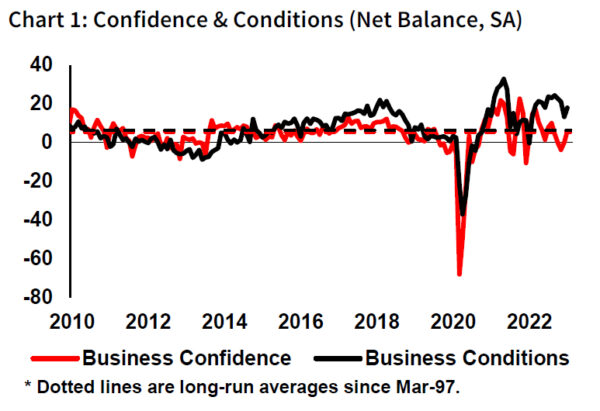
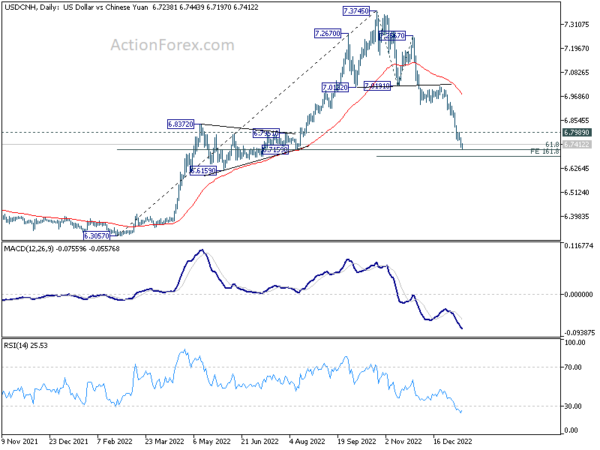
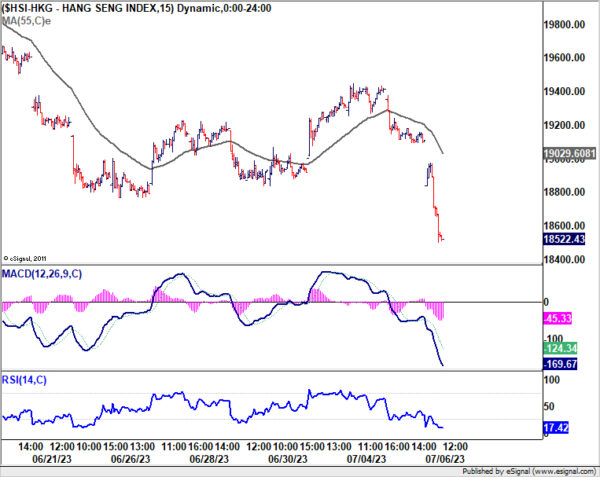
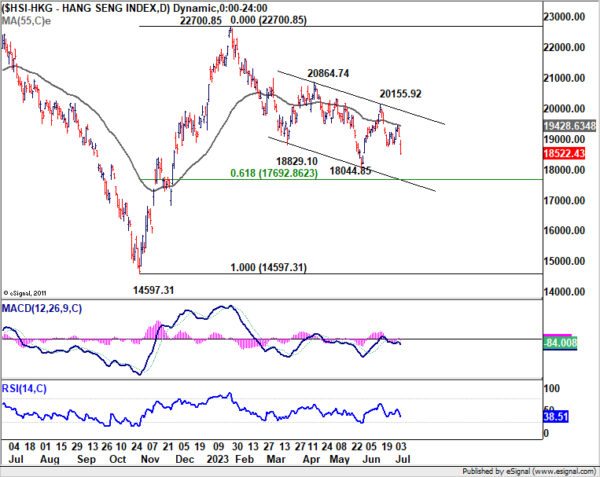
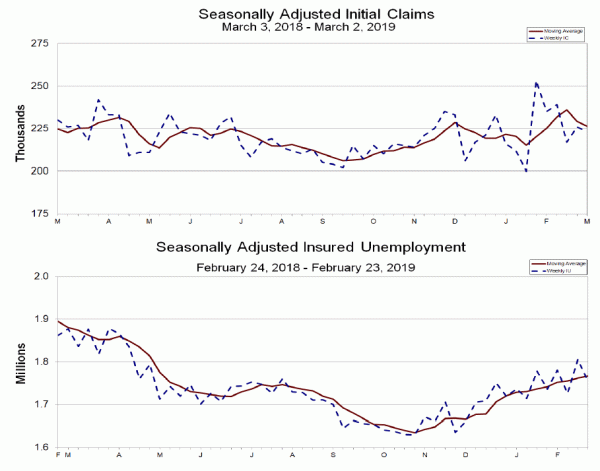
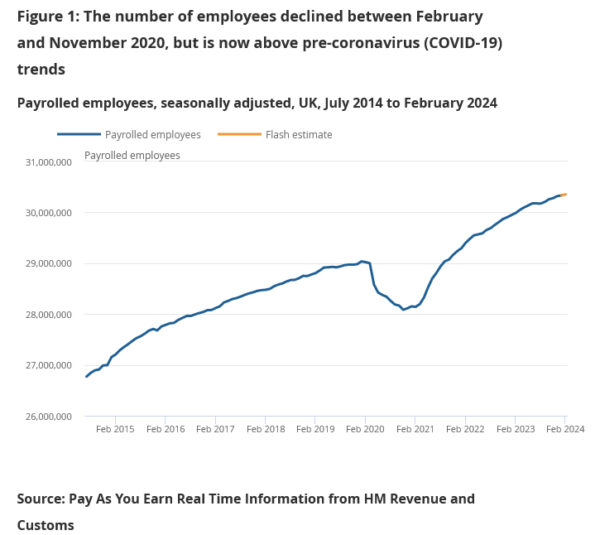
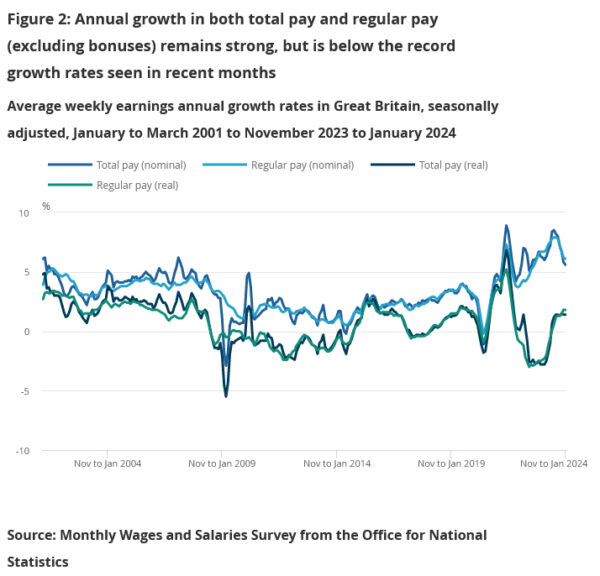
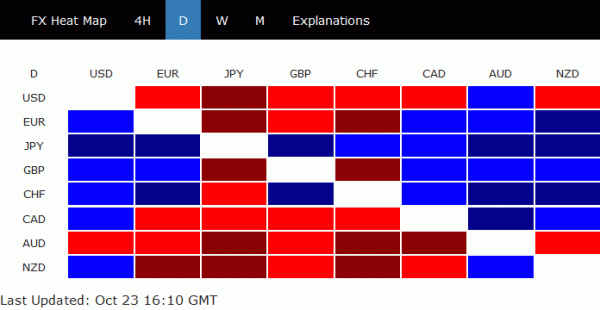
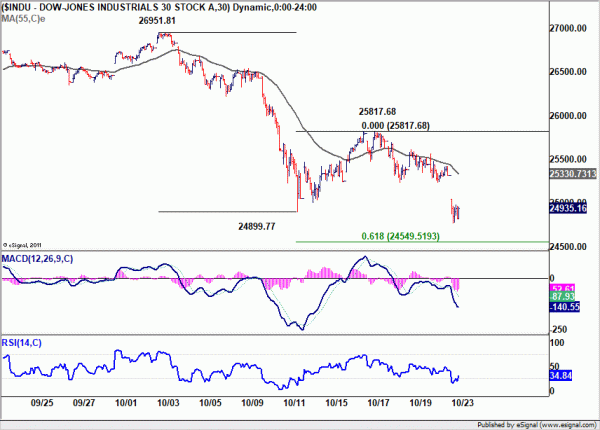
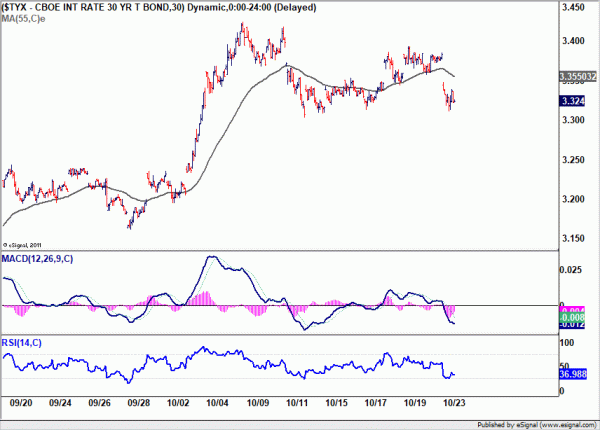
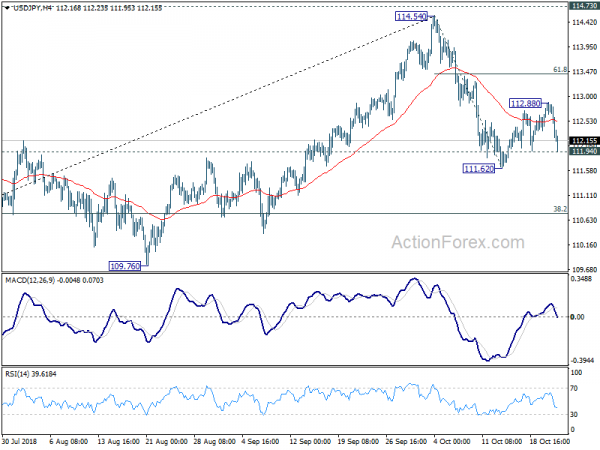
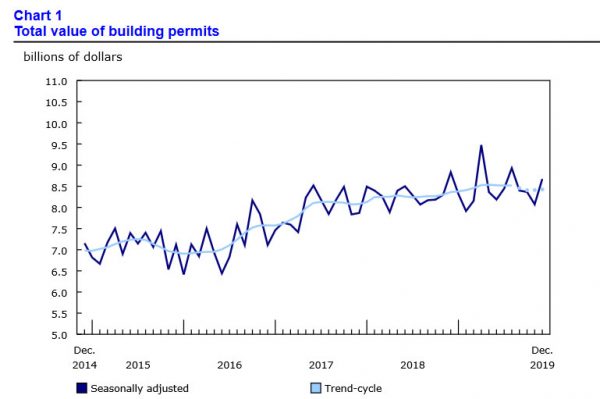
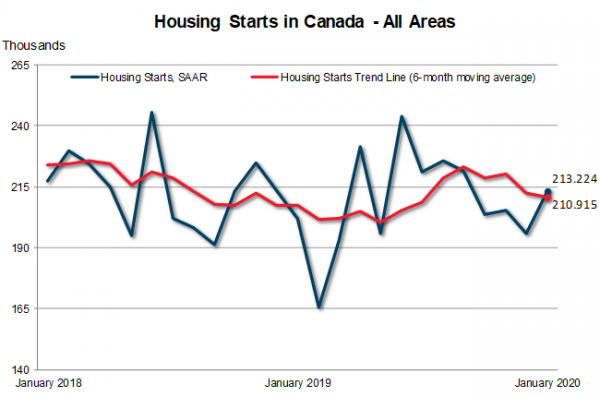
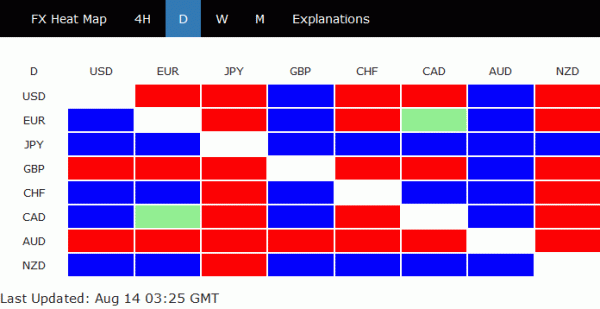

Eurozone CPI jumped to 1.3% yoy in Mar, but core CPI slowed to 0.9% yoy
Eurozone CPI jumped to 1.3% yoy in March, up from 0.9% yoy, above expectation of 0.9% yoy. However, CPI core dropped to 0.9% yoy, down from 1.1% yoy, missed expectation of 1.1% yoy.
Energy is expected to have the highest annual rate in March (4.3%, compared with -1.7% in February), followed by services (1.3%, compared with 1.2% in February), food, alcohol & tobacco (1.1%, compared with 1.3% in February) and non-energy industrial goods (0.3%, compared with 1.0% in February).
Full release here.